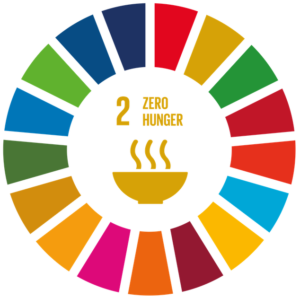Sustainable Development Goal 2
The Sustainable Development Goals
On 10 September 2014, the UN General Assembly decided that the Report of the Open Working Group on Sustainable Development Goals would be the main basis for integrating the SDGs into the post 2015 development agenda. On September 25th 2015 all countries adopted the Sustainable Development Goals (SDGs). For the goals to be reached, everyone needs to do their part: governments, the private sector and civil society. Each goal has specific targets to be achieved over the next 15 years. However all goals are interconnected and the key to achieving one will often involve tackling issues that overlap with another.
SDG 2 is to end hunger, achieve food security and improved nutrition, and promote sustainable agriculture; this is the goal that SIANI works towards.
Below you can see how this goal is broken down into sub-goals:
2.1 Prioritise the most vulnerable
By 2030, end hunger and ensure access by all people, in particular the poor and people in vulnerable situations, including infants, to safe, nutritious and sufficient food all year round.
2.2 End Malnutrition
By 2030, end all forms of malnutrition, including achieving, by 2025, the internationally agreed targets on stunting and wasting in children under 5 years of age, and address the nutritional needs of adolescent girls, pregnant and lactating women and older persons.
2.3 Productivity
By 2030, double the agricultural productivity and incomes of small-scale food producers, in particular women, indigenous peoples, family farmers, pastoralists and fishers, including through secure and equal access to land, other productive resources and inputs, knowledge, financial services, markets and opportunities for value addition and non-farm employment
2.4 Sustainability
By 2030, ensure sustainable food production systems and implement resilient agricultural practices that increase productivity and production, that help maintain ecosystems, that strengthen capacity for adaptation to climate change, extreme weather, drought, flooding and other disasters and that progressively improve land and soil quality.
2.5 Diversity
By 2020, maintain the genetic diversity of seeds, cultivated plants and farmed and domesticated animals and their related wild species, including through soundly managed and diversified seed and plant banks at the national, regional and international levels, and promote access to and fair and equitable sharing of benefits arising from the utilization of genetic resources and associated traditional knowledge, as internationally agreed.
2.a Innovation
Increase investment, including through enhanced international cooperation, in rural infrastructure, agricultural research and extension services, technology development and plant and livestock gene banks in order to enhance agricultural productive capacity in developing countries, in particular least developed countries.
2.b Trade
Correct and prevent trade restrictions and distortions in world agricultural markets, including through the parallel elimination of all forms of agricultural export subsidies and all export measures with equivalent effect, in accordance with the mandate of the Doha Development Round.
2.c Markets
Adopt measures to ensure the proper functioning of food commodity markets and their derivatives and facilitate timely access to market information, including on food reserves, in order to help limit extreme food price volatility.
